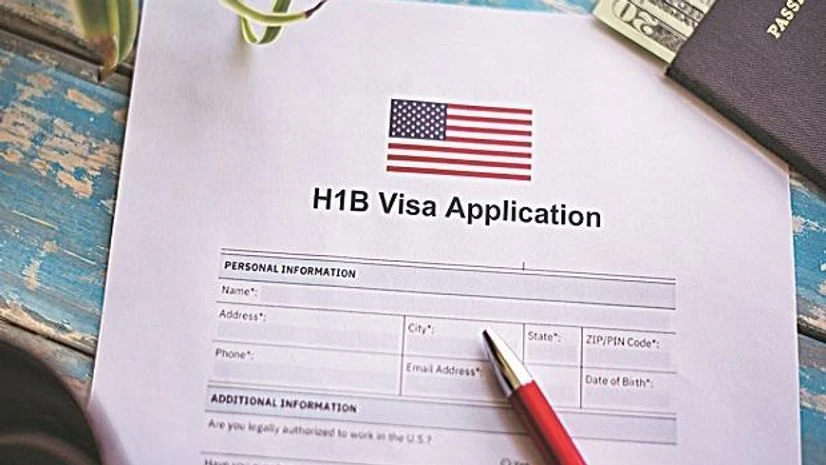Good news! Indians now have a second chance at the H-1B visa. But how? The US Citizenship and Immigration Services (USCIS) has announced that a second lottery will be conducted for the financial year 2025 H-1B cap for the regular cap category. This decision comes after the initial selection process held in March 2024 did not fill the available spots. Here's a breakdown of what this means and how it could impact those aiming for an H-1B visa.
What is the H-1B Visa?
The H-1B visa is a nonimmigrant work visa allowing US employers to hire foreign workers in specialised fields for a specific period. These roles typically require a bachelor's degree or its equivalent and are often found in sectors like technology, finance, engineering, and architecture. The visa is highly sought after, given the opportunities it provides for skilled workers to live and work in the United States.
What is the H-1B cap lottery?
The US government sets an annual cap on the number of new H-1B visas issued each fiscal year. When applications exceed this limit, a lottery system is employed to select which petitions will be processed. This lottery system creates a sense of uncertainty for employers and prospective H-1B visa holders alike.
Also Read
"The H-1B cap lottery is a result of the high demand for these visas, and it can be a source of uncertainty for employers and prospective H-1B visa holders," says Abhijit Zaveri, Director and Founder of Career Mosaic.
How does the H-1B cap lottery work?
H-1B electronic registration: Prospective H-1B applicants must first register with USCIS electronically. This step is necessary to enter the lottery, which is open to all whose occupation is subject to the cap.
Random selection (lottery): If the number of registrations exceeds the annual cap, a random lottery is conducted. The process starts with selecting 20,000 petitions under the advanced degree cap. Any unselected registrants from this category are then added to the general pool for the 65,000 regular cap.
Submission of petitions: If selected, employers can submit H-1B petitions on behalf of their prospective employees during a designated filing period, typically starting in early April.
Processing of selected petitions: The selected petitions are then processed by USCIS. If approved, the foreign workers can begin or continue their employment in the United States.
How to register for the H-1B cap lottery?
To enter the H-1B lottery, both the prospective employee and the sponsoring employer must create online accounts with USCIS. Even if an applicant already has a myUSCIS online account, a separate "registrant" account is required for the registration process.
The registration process involves a $10 fee and includes providing basic information about the sponsoring company and the prospective employee. This period is brief, typically lasting about 14 days each year. Failure to register during this window means losing the chance to apply for the H-1B visa unless the occupation is cap-exempt.
Why is a second lottery necessary?
The second lottery is needed to meet the annual H-1B visa quota. The initial round did not receive enough petitions to fill the available slots under the regular cap, so another selection process is necessary to reach the required numbers.
Who is eligible for the second selection?
The second selection will be drawn from previously submitted electronic registrations. This includes those indicating eligibility for both the master’s cap and the regular cap. However, there will be no additional selection for the master’s cap, as sufficient petitions were received to meet the FY 2025 master’s cap allocation.
When will the second selection take place?
USCIS has indicated that the second selection will happen "soon", though no specific date has been provided. Selected registrants will have their USCIS online accounts updated with a selection notice detailing the next steps, including when and where to file the H-1B cap-subject petition.
Here's the process:
Initial selection: The first random selection for FY 2025 H-1B cap-subject petitions occurred in March 2024.
Second selection: USCIS will conduct a second random selection from previously submitted registrations.
Notification: Selected registrants will receive notification via their USCIS online accounts.
Announcement: USCIS will announce the completion of this process.
Filing instructions: The USCIS online accounts will be updated with detailed instructions for filing.
H-1B visa lottery in FY 2024
This year’s situation mirrors the previous financial year, FY 2024, when a second lottery was also necessary due to a surge in applications. Last year, USCIS received 780,884 submissions, a significant 61% increase, likely contributing to the continued need for additional selections.
How much does the H-1B visa cost?
The initial cost to register for the H-1B lottery is $10. If selected, the employer must pay $460 to file Form I-129 (Petition for a Nonimmigrant Worker). The costs can increase depending on various factors, such as the size of the company, expedited processing, changes in employment, and attorney fees.
H-1B lottery selection process
Once the registration window closes, the H-1B lottery process proceeds as follows:
Random selection process (lottery): The lottery is conducted if registrations exceed the cap, selecting who can file Form I-129. The advanced degree cap is filled first, followed by the general cap.
Selection notifications: Selected registrants receive an H-1B registration selection notice. Non-selected registrants are not notified until USCIS confirms the cap has been reached for that fiscal year.
Preparing and submitting H-1B petitions: Employers must submit Form I-129, along with supporting documents, within the filing period. Employers can choose premium processing for faster adjudication for an additional fee.
Petition filing timeline: The H-1B filing period usually starts on April 1st, with a typical filing window of 90 days.
Employers can monitor the lottery status of their applicants through their USCIS accounts. The statuses include 'Submitted,' 'Selected,' 'Not Selected,' 'Denied,' and 'Invalidated-Failed Payment.'

)